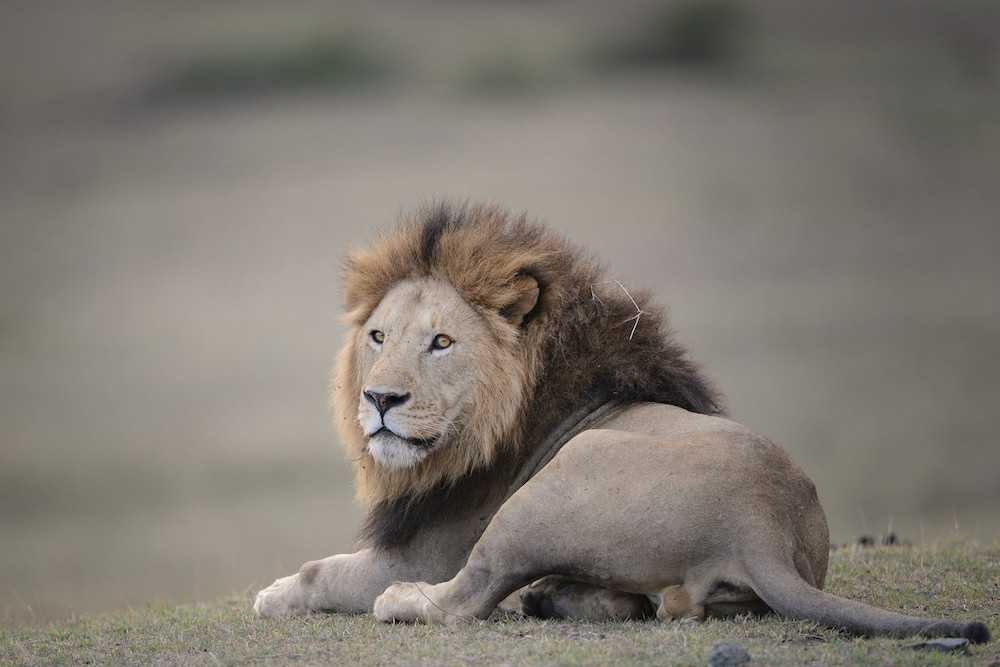
Lions are disappearing from most of the African continent, and the decline is especially evident in West Africa, according to new research.
The lion population has has been in decline since 1992, largely because of conflicts with native herders and declines in lions' prey species, the new survey found. Almost two-thirds of the more than 8,000 lions studied live in populations facing decline. West African lion populations are likely to drop by half in over the next two decades, if conservation measures aren't stepped up, the study found.
"A lot of the African bush is now silent of the lion's roar," said study co-author Luke Hunter, president of Panthera, an organization dedicated to the conservation of big cats. "We're losing that characteristic emblem of African wilderness." [In Photos: The Biggest Lions On Earth]
Apex predators
Past studies of African lion populations have produced a spotty picture of the apex predators' numbers. For instance, a 2013 study found that lion populations had plummeted in Uganda, and a 2014 study suggested they faced being eliminated from West Africa. But in other areas, lions were doing well. The lion had virtually disappeared from some parts of South Africa, but after reintroduction and conservation efforts, the iconic predator prowls in 50 areas where it was once scarce, Hunter said.
To get a more complete picture of the African lion's fate, Hunter and his colleagues looked at 8,221 lions in 47 different populations across Africa going back to 1990. They found steep drops in the lion population in western and central Africa. Over the next 20 years, those regions can expect to lose half their lions if current trends continue, while much of East Africa can expect to lose a third of their lions at the current pace, the researchers reported in a new study published today (Oct. 26) in the journal Proceedings of the National Academy of Sciences.
But it isn't all bad news for the big cats: In South Africa, Botswana, Zimbabwe and Namibia, lion populations have been steady or increasing. Most of those lions were in fenced-in reserves, and the countries had thriving wildlife tourism economies and thus had devoted significant resources to conservation.
Get the world’s most fascinating discoveries delivered straight to your inbox.
Factors driving lion decline
Two factors are driving the decline in lions, the researchers suspect. First, pastoralists who manage herds of animals may trap and kill the beasts because they threaten their livestock.
"If they're killing livestock, people really move heaven and earth to get rid of them; they just hunt them down," Hunter said.
Second, poachers use wire snares and other traps to indiscriminately capture lions' traditional prey species — everything from zebra to wildebeest — and then sell that bushmeat in commercial markets in bigger cities. With fewer animals to hunt, lions are struggling to survive, the study found.
The trophy hunting that took down Cecil the lion is, at most, a small contributor to lion population declines, Hunter said.
"Even if trophy hunting of lions was banned today, it still wouldn't avert the decline, because the factors driving the decline are much bigger," Hunter said.
In general, lions tended to fare better in areas with low population densities, such as Botswana and Namibia, countries that also have thriving wildlife tourism economies. These countries' lion populations are likely doing well because they don't butt up against as many people, and because those countries pour more money into creating fenced-off reserves and deterring poachers, Hunter said.
Saving the lion
Protecting lions in densely populated areas such as West Africa — which also hosts some of the poorest countries in the world — will be a bigger challenge, as many of those countries have scarce resources to address even the human population needs, Hunter said.
But those countries still have options, Hunter said. One of the simplest measures is to teach people methods to protect their herds, such as building better fences or moving their livestock into sturdy corrals at night, Hunter said. These efforts have the benefit of enriching the local human populations as well, he added.
To maintain prey species, regions with struggling lion populations need to fund more conservation workers to patrol wildlife refuges and to remove snares when they see them. Although that's a pricey endeavor, it will benefit species other than lions, from elephants to rhinos, Hunter said.
In addition, while African countries could devote more resources to conservation, Western aid groups may need to increase support if they want to see the iconic symbol of Africa survive, he said.
Follow Tia Ghose on Twitterand Google+. Follow Live Science @livescience, Facebook & Google+. Original article on Live Science.

Tia is the editor-in-chief (premium) and was formerly managing editor and senior writer for Live Science. Her work has appeared in Scientific American, Wired.com, Science News and other outlets. She holds a master's degree in bioengineering from the University of Washington, a graduate certificate in science writing from UC Santa Cruz and a bachelor's degree in mechanical engineering from the University of Texas at Austin. Tia was part of a team at the Milwaukee Journal Sentinel that published the Empty Cradles series on preterm births, which won multiple awards, including the 2012 Casey Medal for Meritorious Journalism.


